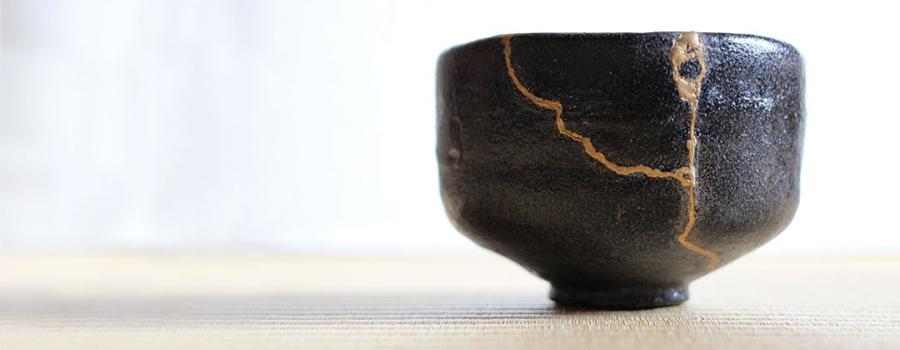I'm not sure if its legit to start a blog by referencing another blog, but there’s an image stuck in my head from a Scientific American piece: a kind of Japanese pottery that puts broken pieces back together not by trying to make the cracks invisible but by using powdered metals in silver and gold to fuse the cracks—making a newly beautiful piece precisely by accentuating the places it fractured. That blog is a wonderful one on resiliency and how leaning into our feelings when trauma happens can create powerfully positive elements in our lives.
When the world went sideways I was happily a member of our community at Nexus Family Healing, a youth and family serving agency spread over four states. But I’m not sure we thought we were a community really—1200 staff working in 9 agencies helping youth and families repair the past, often a trauma filled one, and reshaping their futures. Like a pretty necklace made of a lot of individual beads, we had residential campuses, foster care programs and therapist teams all focused passionately, but separately for the most part, on the questions that drive us social service people: how can we help? How can our influence help a life trajectory for the better?
And then the world changed, the vase cracked and we were in unfamiliar territory: the relationship between the helper and the helpee changed; our individual beads couldn’t solve the challenges on their own and all sorts of startling, distressing and maybe, in the end, wonderful things happened. Leaders who normally set direction with confidence and clarity didn’t have the answers and couldn’t chart the course without a lot of help and strong partnering with who they were leading. High participatory leadership styles were always good practice but now, well you just can’t get through uncharted waters without everyone thinking together. This led to some messy and long video calls but led to our organization being able to balance the support of staff while responding to clients in way that make us all Nexus proud.
As for the first responder direct care staff, many had their personal lives upset as well as being pulled between the messages from their governors to stay home and by their employers to come to work. Or from their children who clamored for attention at home and the laptop asking them to connect with clients. Upsetting the equilibrium, it was no surprise that in some cases the helpers did worse and the helpees did better. There were countless stories of the youth and families functioning well —dealing with trauma was familiar ground for them. The helpers did well to learn from their wisdom about pedaling through disorienting times.
Faced with a universal human challenge, some familiar lines, boundaries and routines came tumbling down. We had to face this one together, acknowledge the distressing state of often not knowing and find our way through territory never crossed before.
So turns out being vulnerable is an ok place to help others from. That needing each other helped us move towards the integration we had been wanting for a long time but had a hard time achieving. That leaders turning to those they lead for guidance as the path is charted may be the most powerful thing we can do. And that those we help have lots to teach us about closing those cracks up not with invisible glue, but to show them off proudly as the source of our wisdom and strength.
When life starts feeling more normal, we could get busy trying to seal up those cracks to re-create a vase that looked like the old one. But would we want to?
Nexus Family Healing is a national nonprofit mental health organization that restores hope for thousands of children, families, and adults each year through services in community mental health, crisis and stabilization, foster care and adoption, and residential treatment. For over 50 years, we’ve used innovative, personalized approaches to heal trauma, break cycles of harm, and reshape futures. We believe every child is worth it — and every family matters. Access more resources at nexusfamilyhealing.org/resources.
